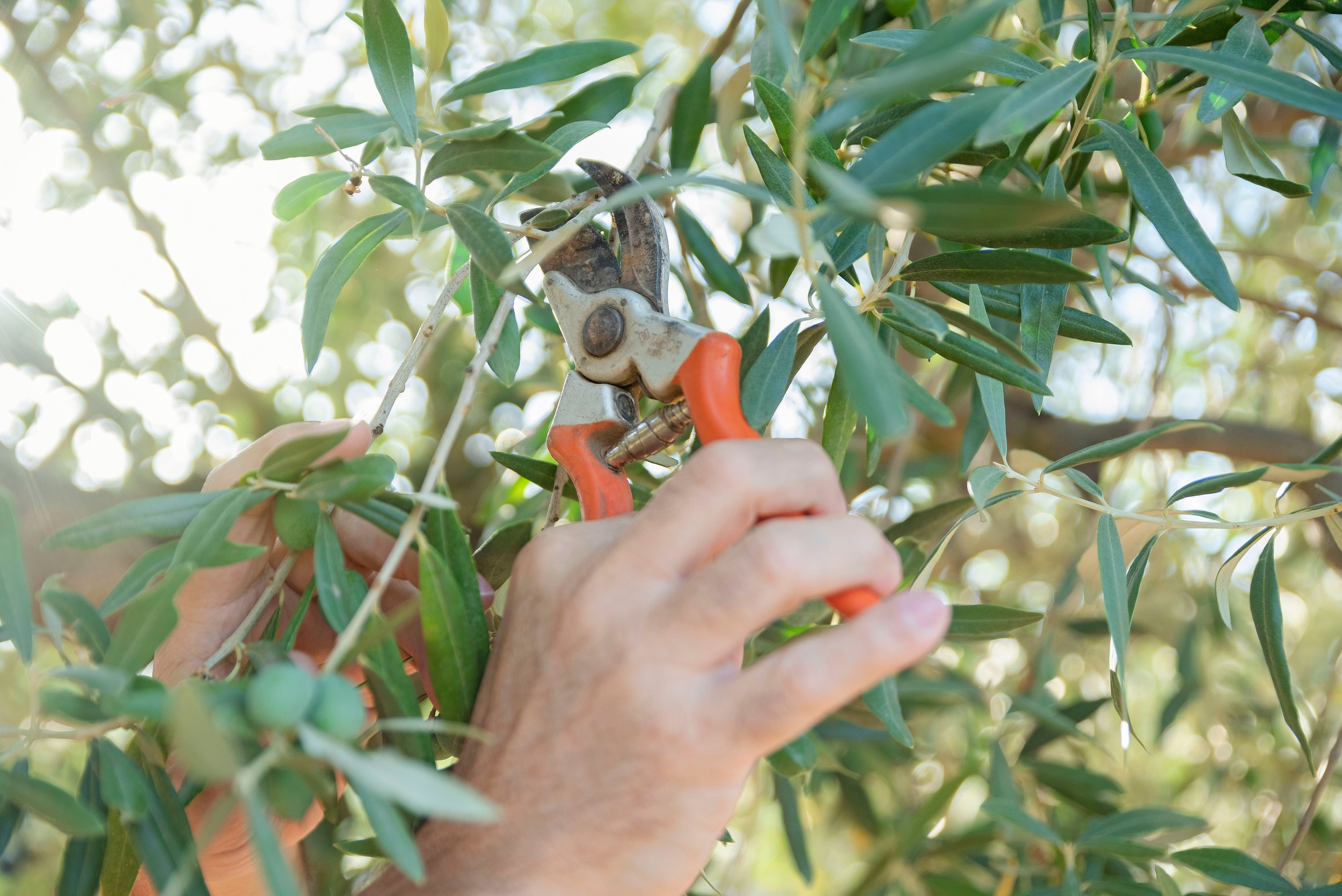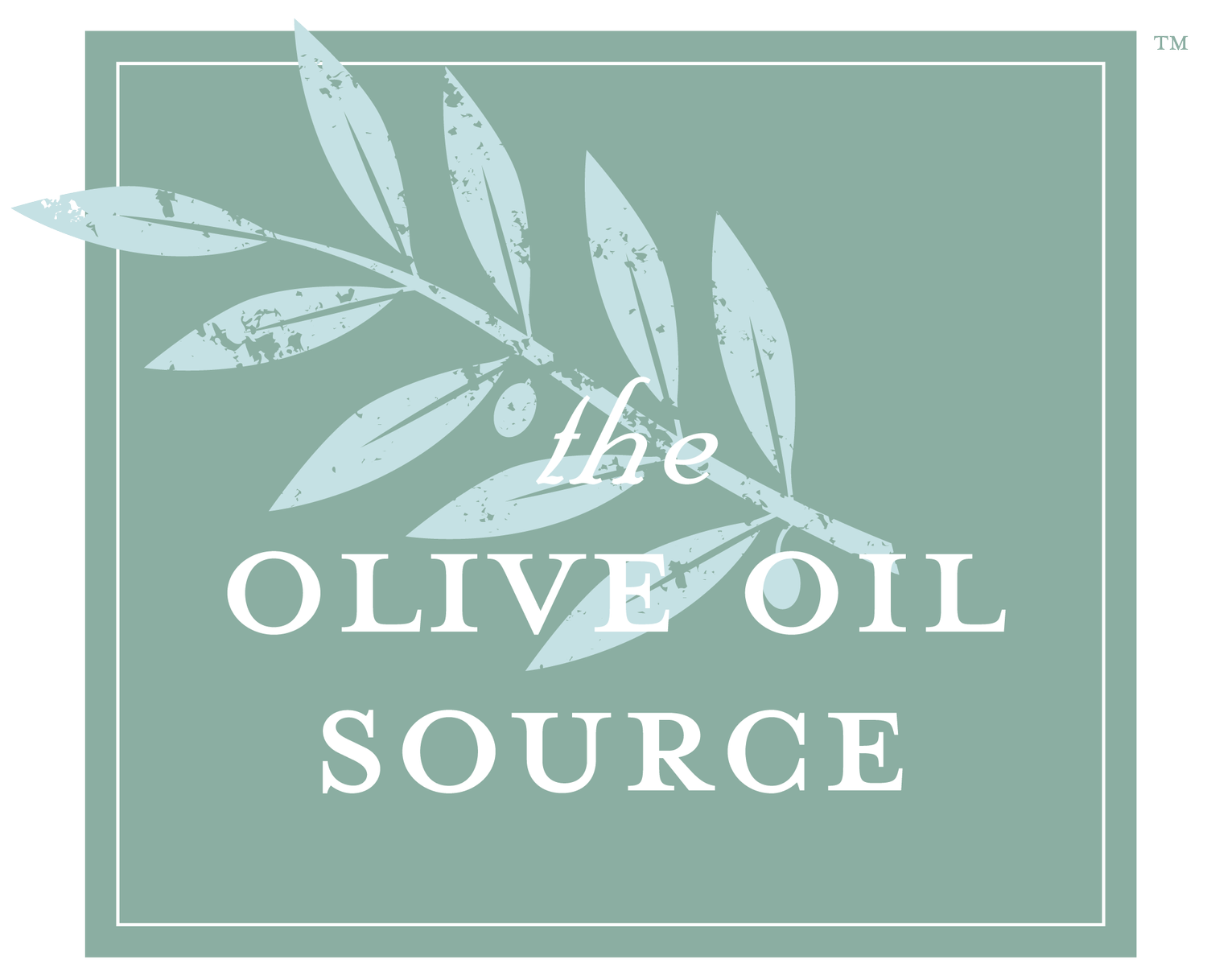
Olive Tree Pruning and Training
For more in-depth information, we recommend the books from Riccardo Gucci and Claudio Cantini, G. Steven Sibbett and Louise Ferguson, and from Paul Vossen, listed in our Sources below.
What are the two most important training objectives of the first three years in the life of an olive tree? Before going into details, let us start by saying that when it comes to pruning young trees, the less the better. Pruning, while it must be sufficient to direct the tree’s growth, should be kept at a minimum. There are two training objectives during the first three years of olive orchard development. The first is to develop a strong, well-spaced framework of uncongested scaffold branches to support heavy crops and to facilitate shaker attachment for mechanical harvest. The second is to bring the new olive trees into bearing as soon as possible.
GENERAL CONSIDERATIONS
Olive trees store most of their energy in their leaves, and unlike deciduous trees, do not show much response to pruning. Pruning that removes large amounts of foliage can stunt olive trees just like summer pruning which removes leaves on a deciduous tree. The removal of too many leaves and shoots can drastically reduce the availability of assimilates in young plants with a small photosynthetic area. Moreover, severe pruning of young trees decreases the shoot to root ratio and induces a strong vegetative response that delays the onset of production.
Consequently, olive growers do not prune their trees very much or at all for the first four or five years. This has been demonstrated to allow trees to come into production two to three years earlier, and with a better yield, than if they were extensively trained at a young age.
There can, however, be specific reasons to prune during the training phase: to eliminate water sprouts and suckers; to balance the development of the different canopy sectors; to avoid overcrossing of shoots; to reduce competition between lateral shoots and the main axis; to stimulate the emergence of lateral shoots at a particular point of the main stem; to remove lateral shoots from the basal part of the trunk in single trunk systems.
Although it is impossible to encompass all the situations occurring in the field, the following concepts can be used as general guidelines.
The more pruning during training, the later the onset of production and the lower the yield.
The more regular the skeleton structure to be achieved at maturity, the more frequent and intense the pruning should be the first few years after planting.
The only shoots to be eliminated are those that compromise the definitive shape of the plant (water sprouts and suckers in particular).
The lateral shoots competing vigorously with the main stem are to be eliminated to promote the growth of the central leader or of primary branches. Shoots inserted at the same height compete strongly with one another and with the main axis and will seldom develop into strong scaffolds. These shoots must be thinned to avoid their progressive weakening.
Pruning should be gradual during the training phase.
SHAPE
There are many ways to prune olive trees, but a few general training forms predominate.
Olive trees normally grow in a basal form, which means that lower laterals will grow just as vigorously as the leader. Consequently, a bush is formed rather than a “Christmas tree” shape. The easiest way to manage this tree habit is to allow for the development of three or four scaffold branches and to keep the center open to maintain good light exposure in the lower portion of the tree.
Unless the desire is for a low bush-shaped tree with multiple trunks, the single trunk tree is much preferred. Single trunk trees provide a location for trunk shakers to grab onto if trunk shaking becomes a harvest option later on. Multiple trunk trees tend to grow wide into the row and the outermost shoots grow as vigorously as the leader, making it difficult to form the ultimate tree shape. It is also easier to control weed competition around single trunk trees.
In order to change 1-gallon multiple trunk trees into a single trunk, they can be pruned at the time of planting or they can be allowed to grow for a year before pruning. Remove all side branches up to three feet from the ground. 4-inch potted trees should be allowed to grow a year in the orchard before removing the lower side branches.
The mini central leader is used in super-high-density systems to maintain a central trunk from which laterals are continuously renewed every three years, but it is a very intensive system and not the natural shape in which olive trees grow.
AT PLANTING
Once the tree is planted, only shoots below a 30-inch (75cm) height should be removed, and the leader should be pinched at 36 to 40 inches (90 to 100cm) to stimulate lateral growth. If lateral shoots above 30 inches have begun growth on the tree in the nursery, no pinching of the terminal is necessary.
FIRST SUMMER
Early in the growing season, select three to five lateral-growing, upright shoots to be the scaffold branches. Space the scaffolds around the trunk, leaving sufficient distance between them to allow eventual shaker access. One to two-inch (2.5 to 5cm) vertical separation between scaffolds is necessary to provide strength on attachment to the trunk. Remove any other vigorous shoots on the trunk while they are quite small to direct growth into the selected scaffolds. Avoid larger cuts late in the growing season, since they would delay production.
SECOND AND THIRD GROWING SEASONS
The only pruning suggested for the second and third growing seasons serves to continue directing tree growth into the framework branches. Usually, all that is required is the early removal of suckers, water sprouts, and excessively low-hanging shoots. Once bearing begins, ideally in the third growing season, a secondary scaffold can be selected and developed.
For information on pruning established trees, see Olive Tree Pruning in Orchard Management.
SOURCES
Riccardo Gucci and Claudio Cantini, Pruning and Training Systems for Modern Olive Growing.
G. Steven Sibbett and Louise Ferguson: Olive Production Manual, University of California.
Paul M. Vossen: Organic Olive Production Manual, University of California.
